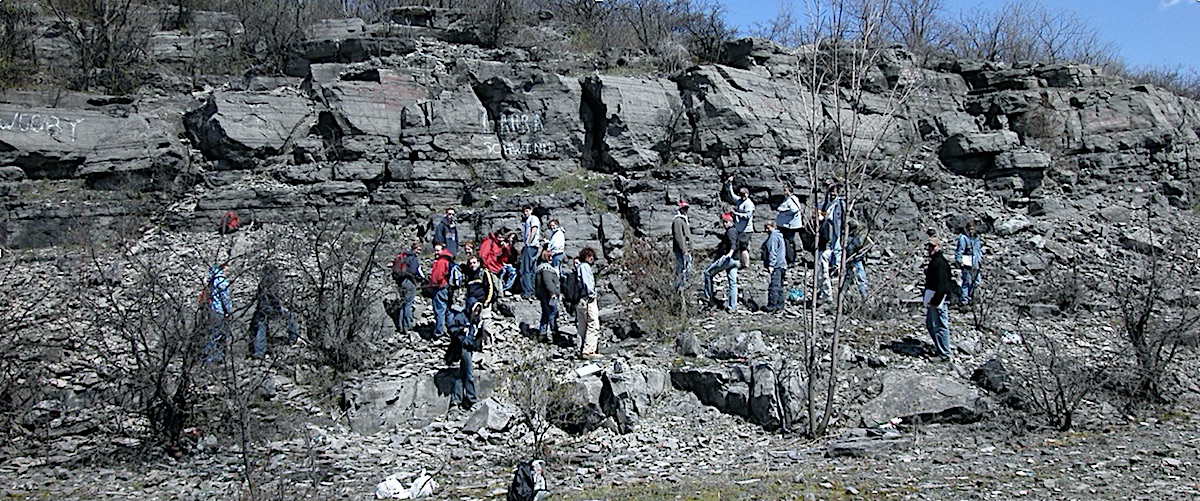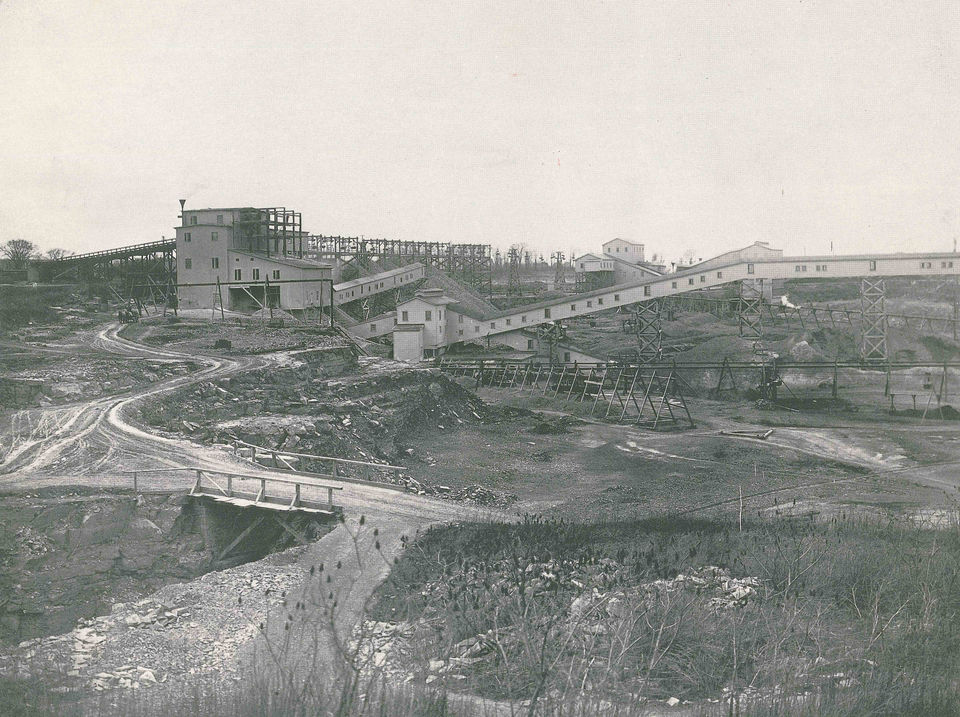Split Rock Quarry Virtual Field Experience in Sedimentology & Stratigraphy
The Split Rock locality, located six km west of Syracuse, NY, reveals a succession of Upper Silurian through Middle Devonian carbonate strata. The quarry contains a variety of carbonate rock types, sedimentary structures, bedforms and fossils that records deposition through shifting paleoenvironments within a shallow inland sea and arid coastal setting. The rocks of the Split Rock Quarry can be explored through this virtual experience which was developed as a resource for educators, students and the public interested in the sedimentary geology, stratigraphy and Earth History of this unique site.

Split Rock Quarry. Image taken during a 2004 SUNY Cortland Historical Geology field trip.
Click one of the buttons below to begin the virtual field work or learn more about the project.
Google Map satellite view with Split Rock Quarry pinned.
360° panorama of Split Rock Quarry in Google Street View. © Robert Ross 2021.
A brief history of the Split Rock Quarry
In 1834, Gilbert Coons began quarrying limestone at the site now known as Split Rock Quarry. Mining operations were expanded in 1880 to supply limestone for the Solvay process (to produce sodium carbonate, an important agent in detergents and in glass manufacturing). Limestone mining operations employing steam shovels and a large crusher were quite extensive, with milled limestone transported via elevated bucket conveyer some 4 miles long to the Solvay Process plant near the shore of Onondaga Lake. In about 1912 mining operations ceased and the quarry was abandoned.
In 1915, the quarry became the site of a munitions manufacturing plant operated and owned by the Semet-Solvay Process Co in support of the effort during the first world war and employed over 2,500 workers. On July 2nd 1918, disaster struck the munitions plant at Split Rock Quarry. It is reported that malfunctioning equipment created conditions for a fire and subsequent explosion. The fire and explosion killed an estimated 50 people and nearly an equal number were injured. Even after the tragedy, the munition production continued until the end of the war.
Following WW-I, the quarry site was again largely abandoned only to be used later by the New York State Department of Transportation as a parking and maintenance facility until around 1980. Although a few relics and structures of historical mining operations remain, the quarry site has been largely left in its natural state and is enjoyed by hikers, naturists, and of course geologists. The 32-acre site is currently owned by Onondaga County.

Quarry operations in 1889. Syracuse Post Standard.

Postcard of bucket conveyor at Split Rock Quarry circa 1910. Wikimedia Commons.

Damage following 1918 disaster. Image Linda D. Epstein.


